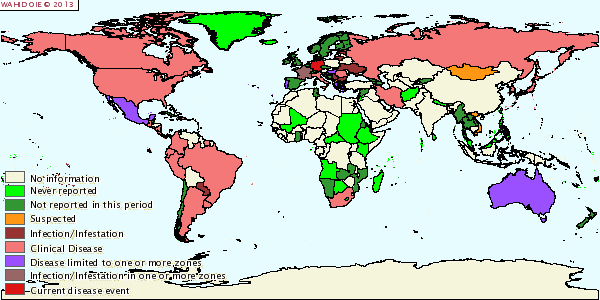How Common is BLV?
While BLV can occur in both beef and dairy herds, in the U.S, most BLV studies have been conducted in dairy cattle. More studies at the national U.S. level should be considered to fully understand the potential impact of BLV on the beef industry.
Michigan
Dairy: A 2018 study found that Michigan dairy farms had within-herd prevalence ranging from 25-65% with an average of approximately 50% (LaDronka et al., 2018).
Beef: Our group has reported that 25.7% of beef bulls in Michigan, one year of age and older, were infected by BLV (Bartlett et al., 2013). More recently, among 121 adult beef bulls (>1-year-old) from 39 different beef farms in Michigan, 44.6% were BLV positive (Benitez et al., 2019).
Nationally
Dairy: Epidemiological studies have shown that at least 84% of U.S dairy herds are infected with BLV. Of infected herds, 23% to 47% of cows test positive for BLV. (USDA, 2007; LaDronka et al., 2018)
Beef: Over twenty years ago, individual prevalence of BLV in U.S beef herd was 10.3%. A more recent study reports that at least 33.6% of cull beef cattle brought into U.S. slaughterhouses are positive for BLV.
Internationally
Many countries have successfully eradicated BLV. Bovine leukemia virus was eradicated from all cattle in 12 European countries as of 2003, and from 8 additional European countries and New Zealand as of 2011. Additionally, BLV has been eradicated from most regions of Poland, Portugal, and Italy. In these countries, eradication was achieved mainly by testing and culling or segregating positive cattle (56).




 Print
Print Email
Email